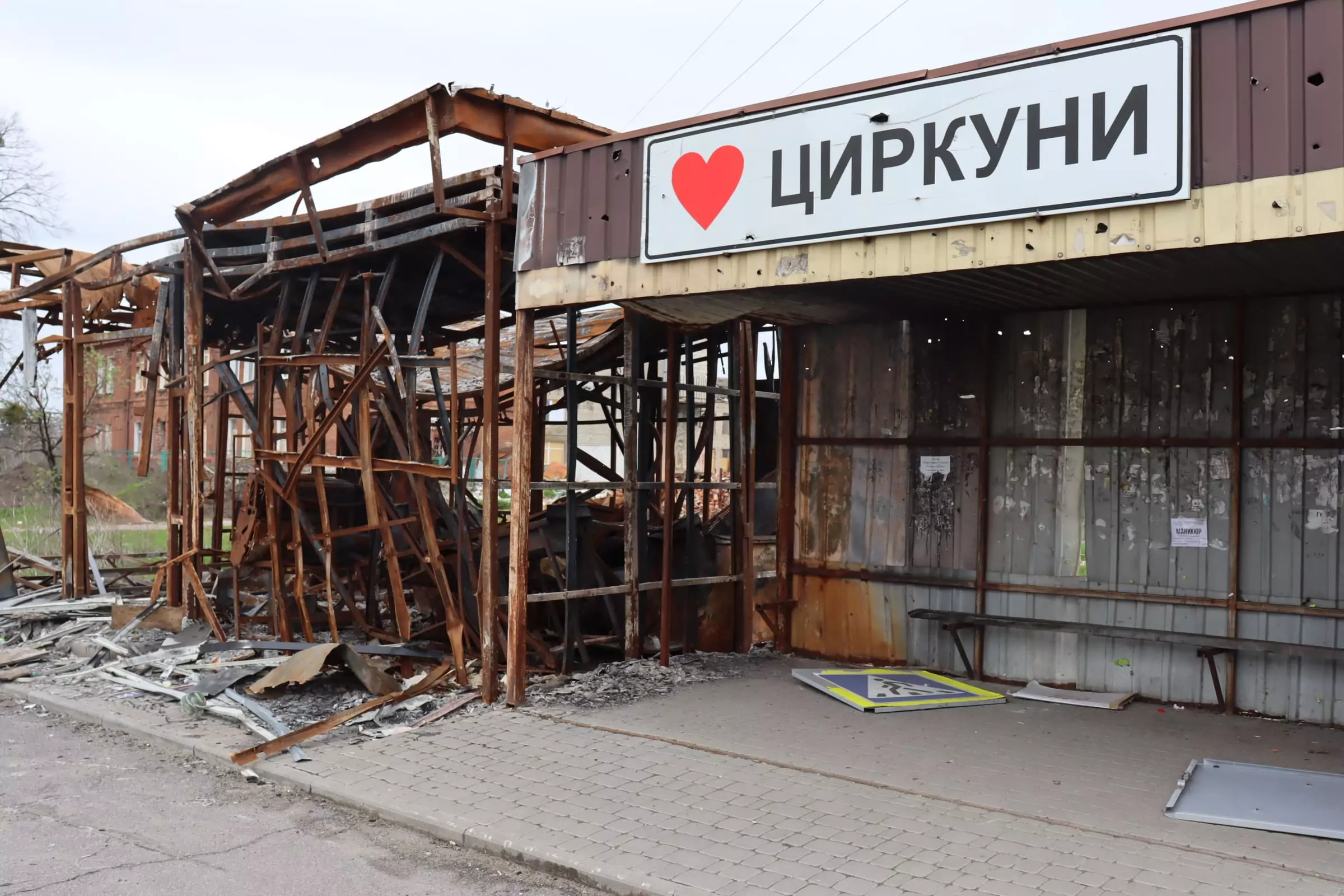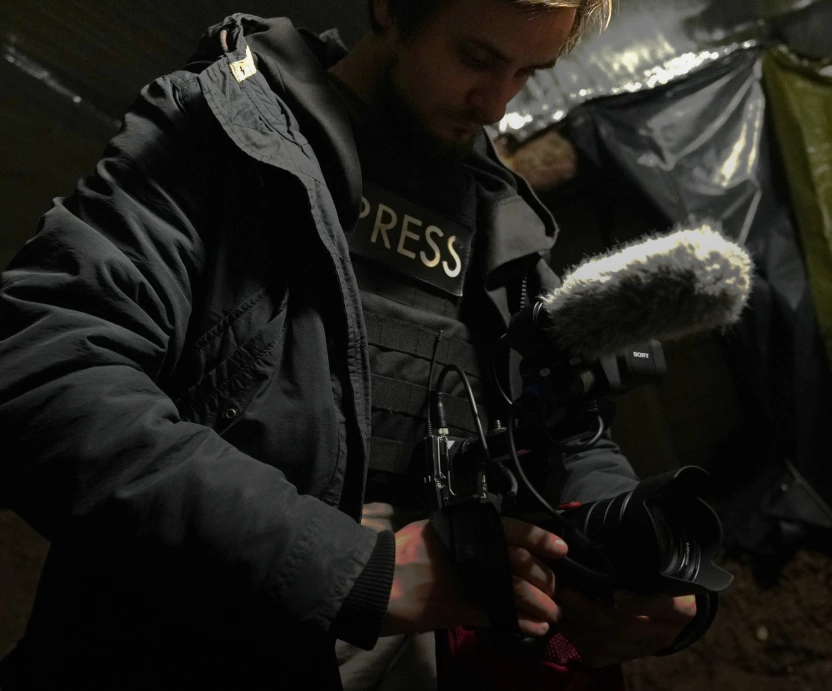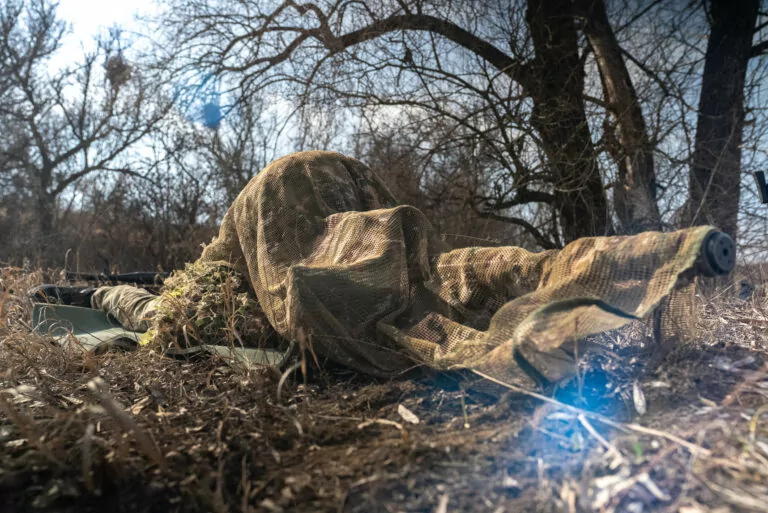The village of Tsyrkuny is one of the most affected by Russian shelling in Kharkiv Oblast. It is located three kilometers from the Ring Road.
The closer we get to the destination, the bleaker the landscape becomes. We see the shelled bus stops and damaged houses, albeit almost all with patched roofs, not yet erased “People” inscriptions on the gates. Then we get to a destroyed pharmacy, and a large two-story building burned to the ground.

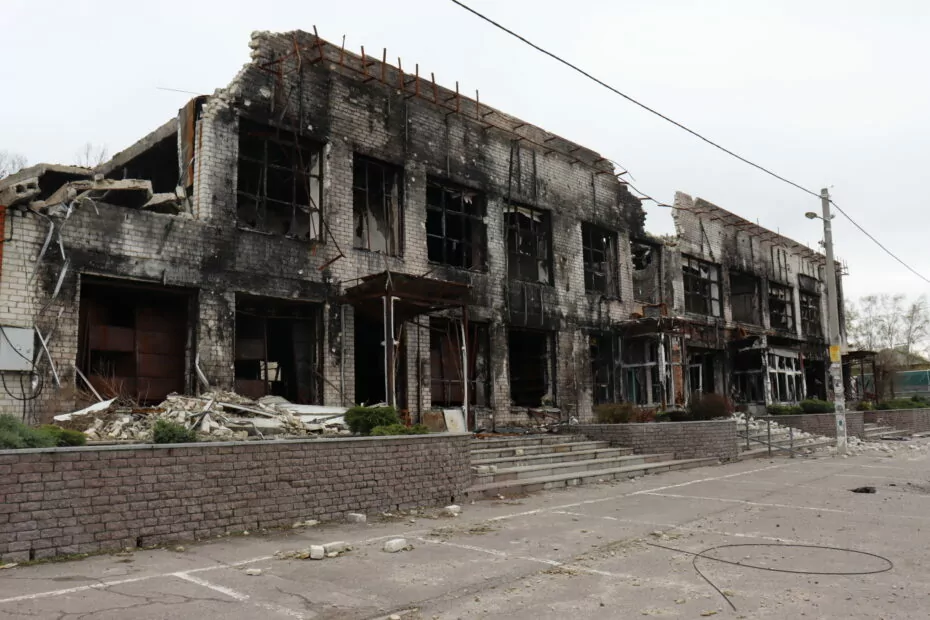
We move further and see a small church on the settlement’s outskirts – one passes it driving to Kharkiv. About a hundred people hid here during the occupation. Father Apollinarius says that both children and elderly people were hiding there.
The church food stocks quickly ran out, but the villagers went home under fire and brought everything they had. The church building was also affected; the Russians hit the place near it several times.
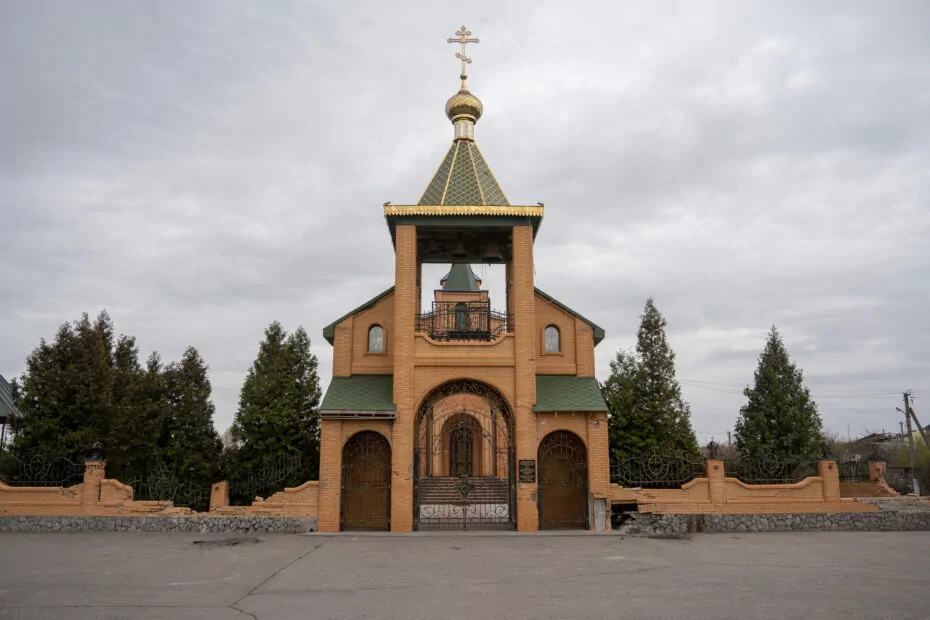
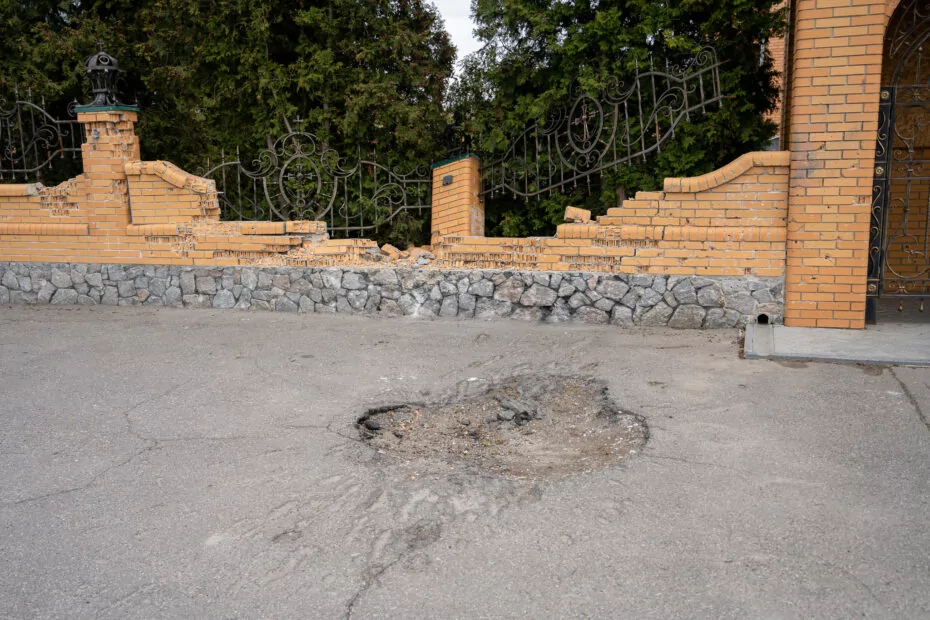
In the center of the village stands the popular installation “I love Tsyrkuny.” When we come closer, we see that every letter has bullet marks.

“Probably, it’s easier to say what wasn’t affected. Almost all social institutions were destroyed or damaged: schools, kindergartens, hospitals, dispensaries, and administrative buildings. In general, about 80% of housing in the Tsyrkuny community was destroyed,” says Olena Havryliuk, head of the Department of Land Relations and Architecture, acting head of the village council.
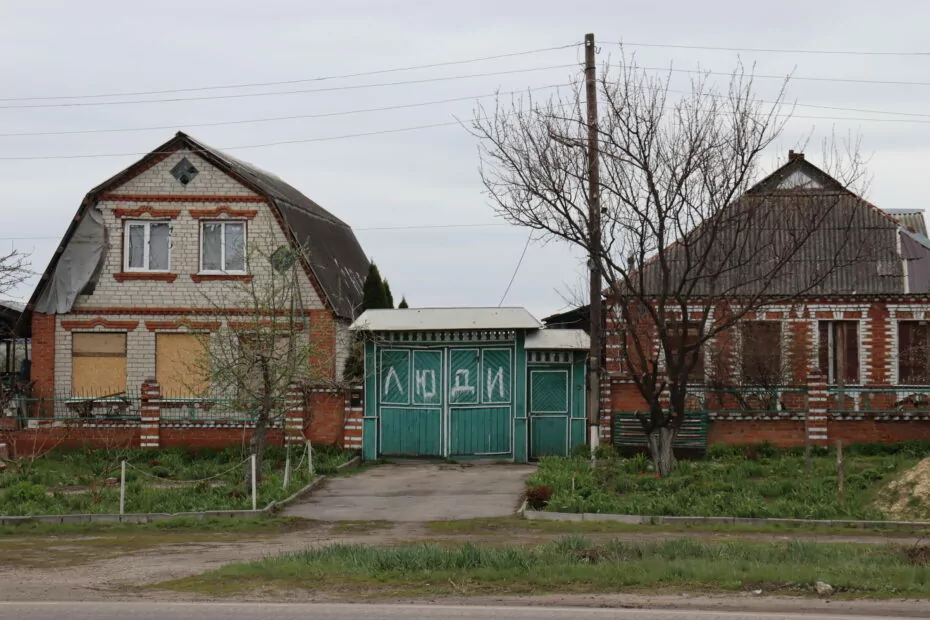
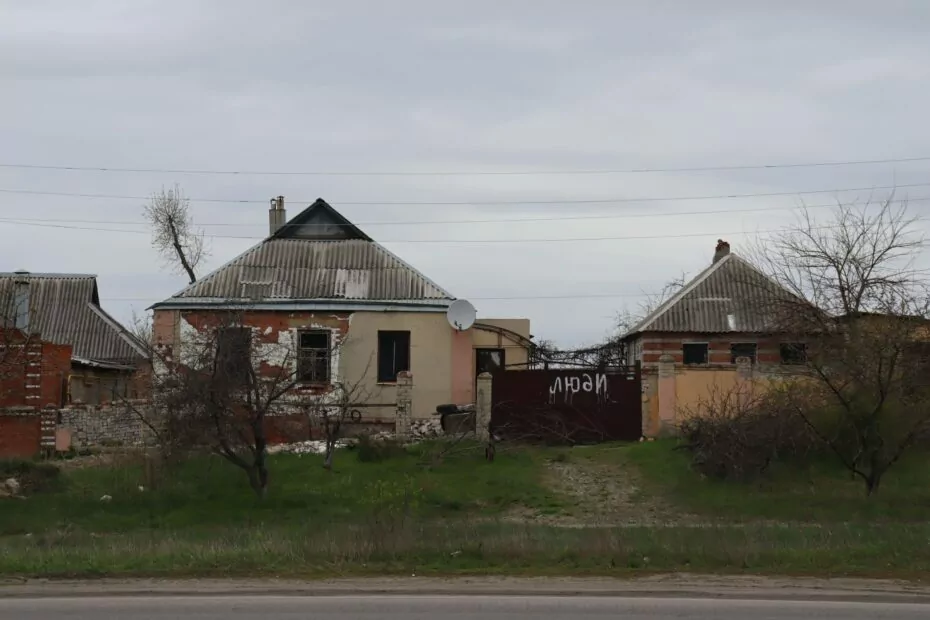
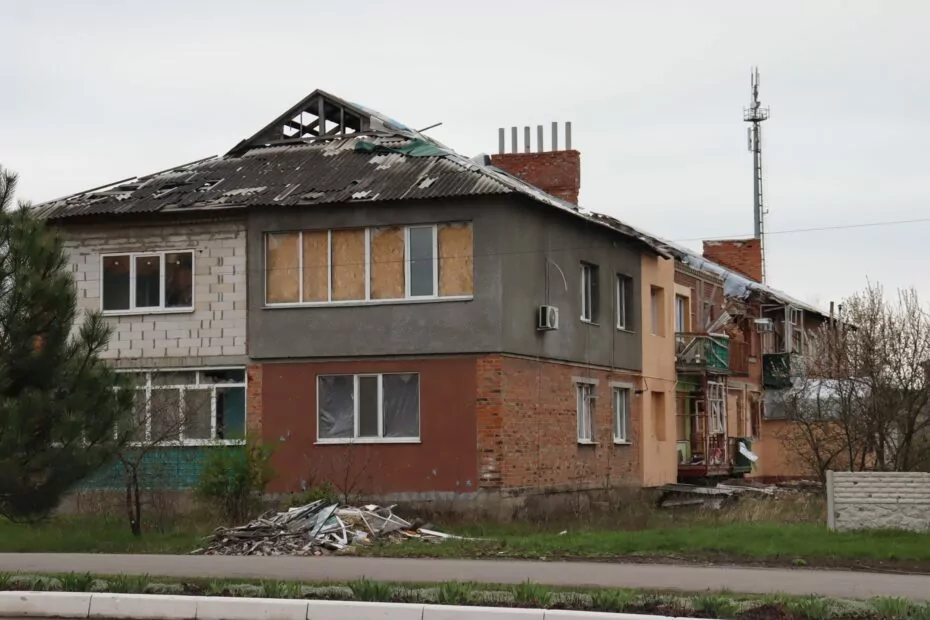
Among the cultural monuments, the destroyed dispensary was a pre-revolutionary building. “The fascists did not destroy it – they spared it, and the Russians – smashed it,” Olena adds. Currently, a project to rebuild the dispensary and two more schools is being prepared.
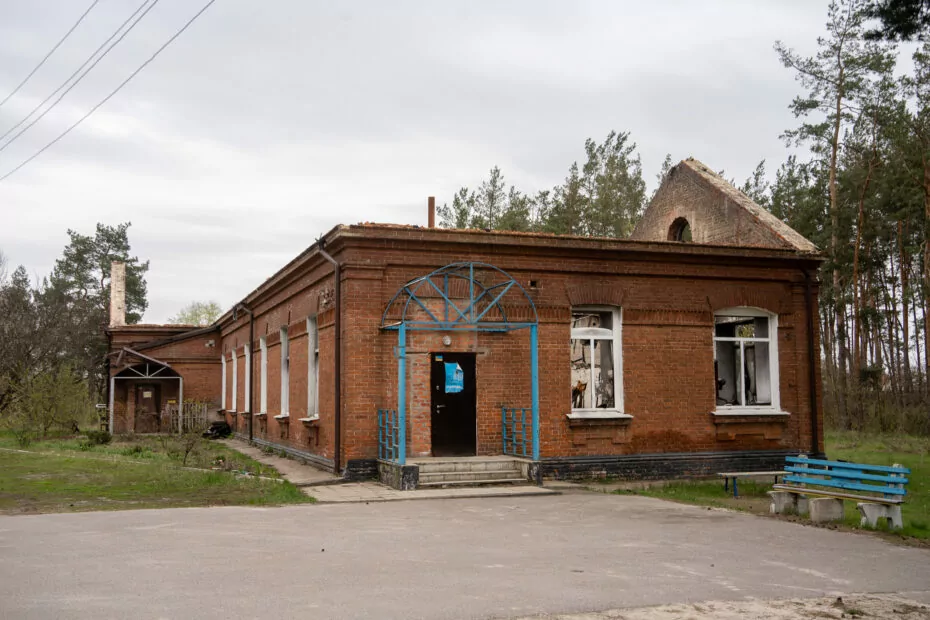
Due to the mined and affected fields in Tsyrkuny, farmers and industrial enterprises do not work. Therefore, there are no taxes and no profit. So the community cooperates with charitable foundations. The funds for restoration are partly taken from the state budget, partially provided by partners.
Currently, the For Peaceful Sky charitable foundation helps to rebuild the settlement. “If you see the roofs of houses covered in blue here, it’s them. Their workers roofed houses for free. They promise to cover it with roof shingles in the spring,” Olena says.
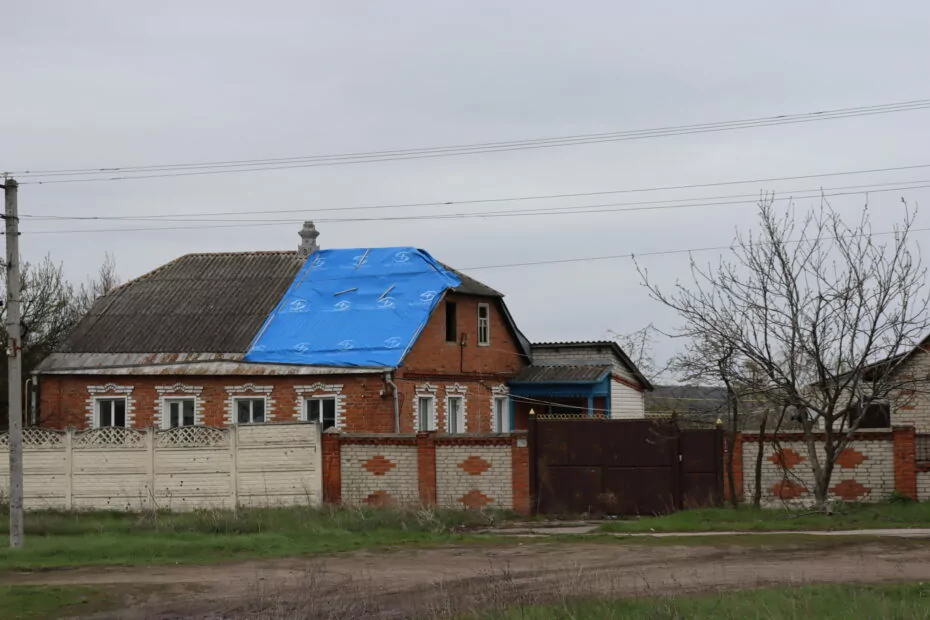
Some foundations make windows, and some partners are ready to take on an entire street for repair.
People sometimes appear on the streets, but very few. We met only a few locals during the several hours in the center. Before the beginning of the full-scale invasion, up to 10,000 people lived in the community. Now about 3-4 thousand left. However, residents are gradually returning.
In the center of the village, near the cultural center, is a tent, a local heating point. The weather prompts that it is worth coming in to warm up and get to know the community residents.

The first person we meet is Mariia Ivanivna, a volunteer. When we came, she was talking to a psychologist.
Another volunteer, Nataliia Ivanivna, immediately joins our conversation. Women talk about life in the occupation.
Russian soldiers entered the village on Feb. 24 at 4.30 a.m. The women say the soldiers were well-dressed, wearing their best costumes.
“They really expected that they would be met here as heroes. But as soon as they reached the Ring Road and the Ukrainian military began to defend the territory, the Russians understood that they were not welcome here,” says Mariia Ivanivna.
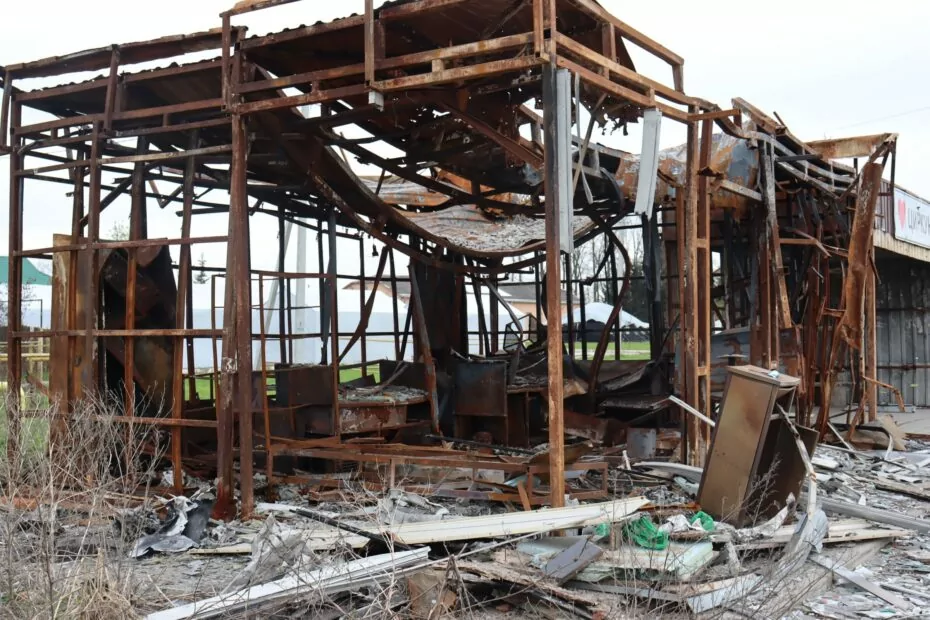
Then they started going around the houses, recalls the woman. If they knocked and no one opened for a long time, the occupants could shoot at the lock, break down the door, and climb over the fence. They were interested in who lived here, asked to show the residence documents, offered to evacuate to Russia, and were looking for “Nazis.” “But we said that was our home, and no one was happy to see them here,” Mariia Ivanivna shares. In response, the invaders said they were on a special mission and had come to liberate the people.
Volunteers say that the occupiers took away many Anti-Terrorist Operation participants from the village. Only one of them returned due to the exchange of prisoners of war. He is currently in rehabilitation.
There was a school next to the cultural center. During the occupation, the Russians made it their headquarters. There were snipers near the building who did not let anyone in. It was from Tsyrkuny that the occupiers shelled Kharkiv.
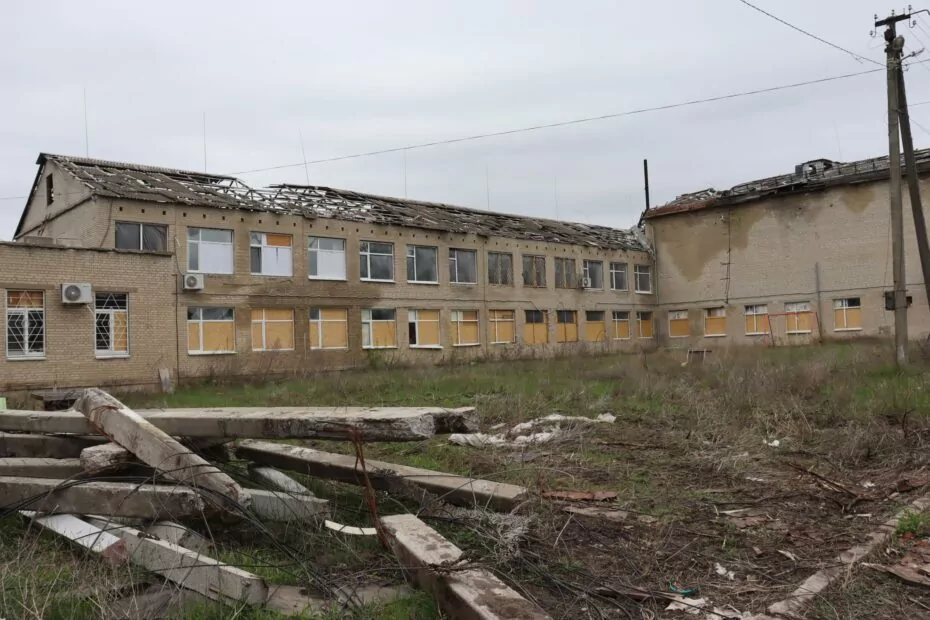
According to the residents, the most challenging thing during the occupation was the movement limitation around the village. If you still wanted to leave the house, you had to wear the white bandage; otherwise, they [Russians] could shoot you.
“The Russians forbade talking on the phone, and they could break the gadgets. At the checkpoints, they handed out printouts that said that Ukraine had forgotten us. They told us if we are released, the Ukrainian authorities will shoot us all,” says Nataliia Ivanivna.
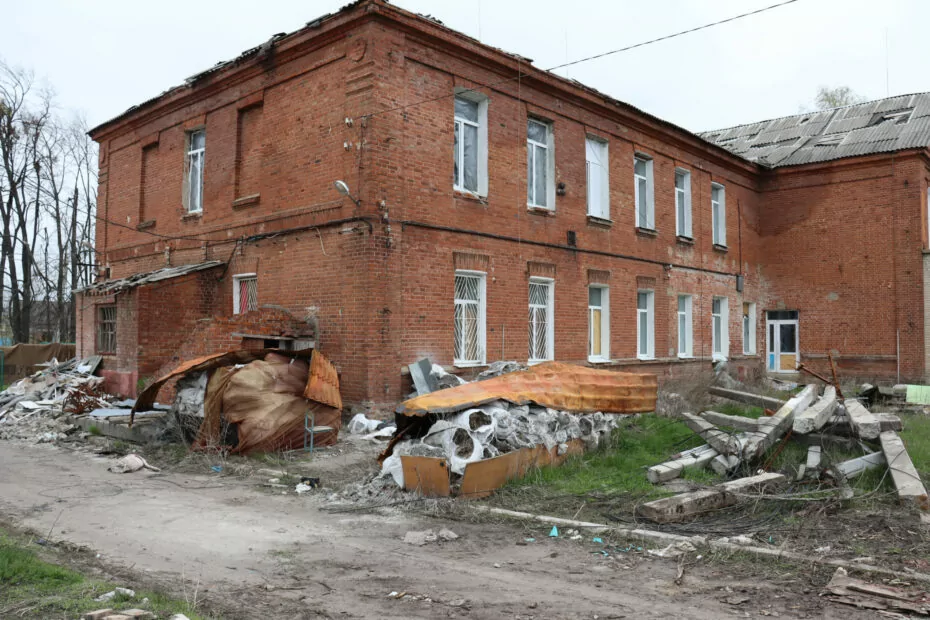
“It was scary, and we didn’t leave our street for two and a half months. We tried to be less visible to them,” says Mariia Ivanivna. “There was a case when a Chechen approached me and asked who lives here. I answered him and said, “Are you going to shoot at us, old people?” He put his hand on my shoulder and answered, “We will not harm you.”
It became even more terrible after the liberation. The village of Tsyrkuny was liberated on May 7. After that, the Russians chaotically shelled the city. Until Sept. 10, 2022, the settlement was constantly under fire. The attacks subsided when the Armed Forces of Ukraine drove the Russian army further to the border.
Tsyrkuny Restoration
Volunteers say that many people help the village. They get humanitarian aid, food, building materials, and medicine.
The heating points continue operating. Although fewer people come now, sometimes volunteers have to stay there overnight. It happens that the residents return home to find their house does not exist anymore.

Doctors and psychologists also come here, both for children and adults. Specialists help locals almost every day. In particular, they recently took children to a master class on painting eggs for the Easter holidays. Moreover, one can come here simply to chat.
Since the school is destroyed, education in the village is organized online. A biology teacher comes to the heating point to conduct lessons as the internet connection has been provided here.
The women said that when the Russians fled, they plundered the school. There had been interactive whiteboards and laptops, but nothing was left behind. In addition, they also burned books to stay warm.
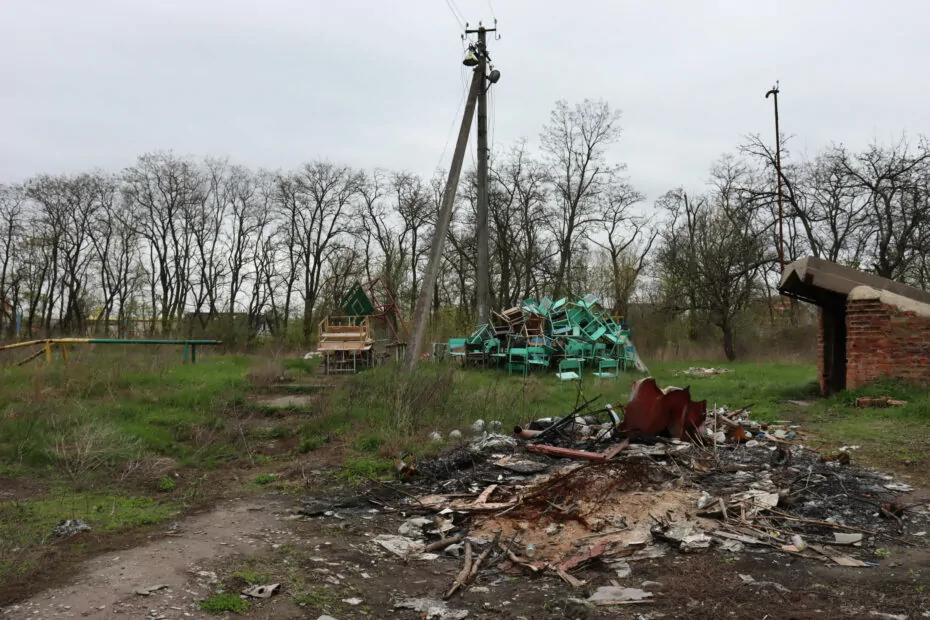
Next to the heating station is a tent where people bring what others might need. Moreover, the modular houses stand nearby too. But no one lives there so far, as people want temporary buildings to be placed where their destroyed homes stand. And the authorities want to make a modular city in the center.
“It’s not very convenient. It would be better if they were allowed to put them near the destroyed houses so that people would not have to go through the whole village, but at the same time rebuild the houses and be able to live in their territory,” says Nataliia Ivanivna.
Two bus routes operate in the village. The first route is Kharkiv — Tsyrkuny — Lyptsi, and the second Kharkiv — Zarichne — Tsyrkuny was launched on April 13.
To start operating, the bus company must receive a demining certificate for the route and only then start working.
Next, we go to the village council, which is now in the same building as the hospital. We have a meeting with Ihor Volodymyrovych Kuzmenko, deputy chief of the Tsyrkuny Village Military Administration.

He right away shows us the building where repairs are being made. This building was empty even before the start of the full-scale invasion. “At first, there were not enough funds to renovate this space, but then we were offered to make a youth center, and we received a grant, so now we are making renovations here.”
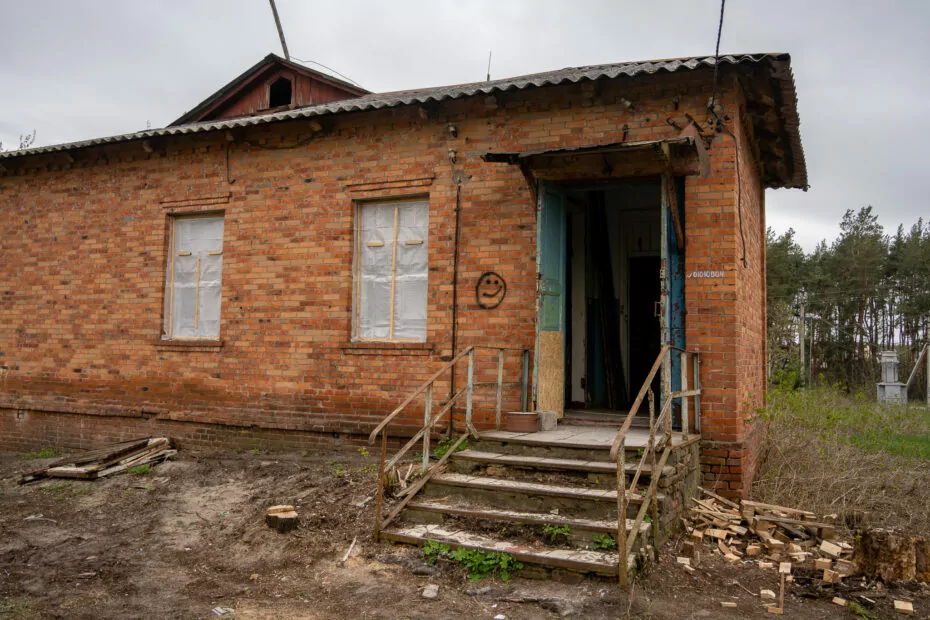
Later, they want to build a suspension bridge and put hammocks there. But they do not reveal all the plans for the place, wanting to make a surprise. The authorities only share the intent to provide conditions for the children to learn and recover.
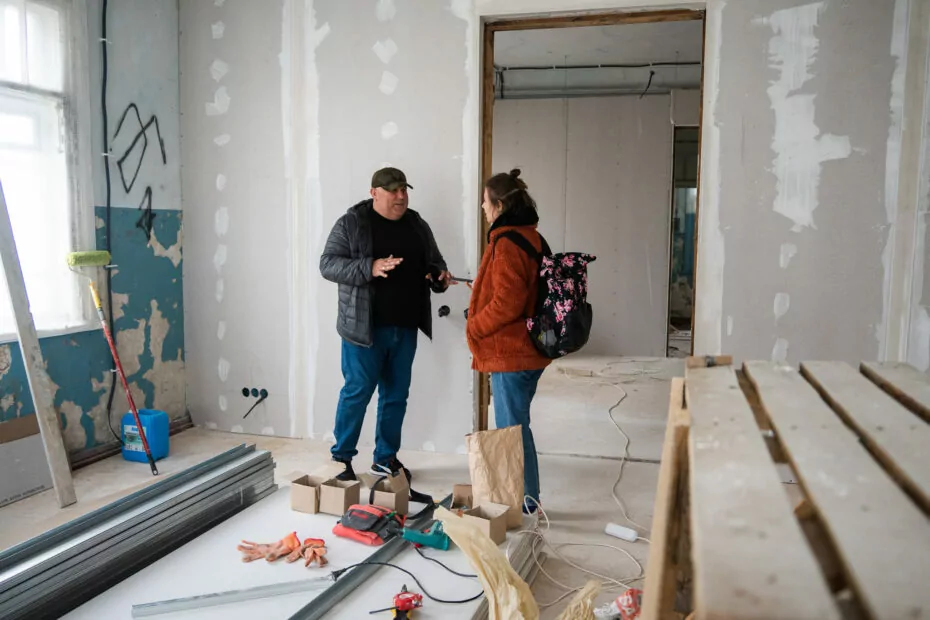
Currently, up to 200 children stay in the community. Before the war, 450 children studied at local school and 420 at school in Tyshky [a village in Tsyrkuny community in Kharkiv district – ed.].
Shops and pharmacies have already started working. Previously, Tsyrkuny was considered a kind of sausage capital of the region with Vesna and Denver meat processing plants. Today Vesna is gradually recovering, and Denver is rebuilding its premises.
“However, we can’t say that business has returned, as the electricity supply has not yet been fully restored. Although by the end of the month, the energy companies promise to restore the power supply in the village completely,” comments Ihor Volodymyrovych.
The deputy head of the military administration talks about another aspect related to the return of entrepreneurs. “Only the critical infrastructure objects have been demined here. Everything else was not. We understand that this is a titanic task, there are not enough workers, previously the weather conditions added challenges…”
Despite the problems with the mined areas, partial electrification, and lack of jobs, the worst thing, says Ihor, is not even the difficulties of recovery. “Do you know what Russian roulette is? We live constantly in tension; no one knows when and where it will hit. That’s what’s really scary.”
Also read: Constant Missile Attacks and Empty Streets. How Kupiansk Lives on the Front Line
by Daria Lobanok
translated by Tetiana Fram
Become our patron to get exclusive content from our photo reporters.
Follow us on Twitter, Instagram and LinkedIn for more news, stories, and field reports by Kharkiv journalists.
